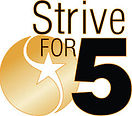
Chapter 26
The Colonization of Land
Bellwork
Notes
Fungal Endophytes
Learning Objectives:
1.B.1: Organisms share many conserved core processes and features that evolved and are widely distributed among organisms today.
1.B.2: Phylogenetic trees and cladograms are graphical representations (models) of evolutionary history that can be tested.
1.C.1: Speciation and extinction have occurred throughout Earth's history.
2.C.2: Organisms respond to changes in their external environments.
2.E.2: Timing and coordination of physiological events are regulated by multiple mechanisms.
3.B.2: A variety of intercellular and intracellular signal transmission mediate gene expression.
3.D.2: Cells communicate with each other through direct contact with other cells or from a distance via chemical signaling.
Bozeman Science: Protists
Watch video.
Take notes on 2B.
Bozeman Science: Plants
Bozeman Science: Fungi
Watch video.
Take notes on 4B.
Science on the Sound Lecture Series
"Our Native Lichens, A Hidden World in Peril"
Lichens
Watch video.
Take notes on 4B.
Scientific Skills Exercise:
Interpreting genomic data and generating hypotheses

What can genomic analysis of a mycorrhizal fungus reveal about mycorrhizal interactions?
Textbook page 529--Complete on Notes 5B.
Scientific Skills Exercise
Interpreting genomic data and generating hypotheses

Test Your Understanding
Textbook page 544, #1-8
Complete on Notes 6B.
As you complete test, mark questions with:
a star (I know this),
a checkmark (I might know this),
or a question mark (I don't know, I guessed).
Self-correct using answers in back of textbook.
Write validations/corrections for checkmarks, question marks, and missed stars (oops).

Illustrative
x
a
m
p
l
e
s
Analysis of phylogenetic trees
Sexual reproduction in fungi
Maximizing surface area
Fungal diseases in plants


Log Entry 2
Where have all the flowers gone?
"It's been proven by quite a few studies that plants are good for our psychological development. If you green an area, the rate of crime goes down. Torture victims begin to recover when they spend time outside in a garden with flowers. So we need them, in some deep psychological sense, which I don't suppose anybody really understands yet."
Jane Goodall

Chapter 26 Lab: There's a fungus among us
The mycorrhizae lab is a structured inquiry lab. We will be analyzing evidence to determine relationships between mycorrhizal fungus and plants. The dependent variables and growth protocol have been controlled experimentally. We will pool data and determine Standard Deviation and Standard Error of the Mean.

FRQ Log
A: Discuss how various derived traits facilitated plant survival and reproduction on dry land.
B: Describe how plants maximize surface area to volume ratios to carry out metabolic functions.
C: Discuss the role of lichen as a pioneer organism.
D: Discuss the partnership between plants and fungi in the establishment of biotic interactions and chemical cycling.
E: As plants began to colonize land, how was the cycling of matter on Earth affected?

I can't see the forest for the trees...
Basic Biology Text:
Chapter 20: Protists (496-520)
Algae: 510-514
Alternation of Generations: 512-514
Chapter 21: Fungus (526-542)
At a minimum, understand:
Characteristics of protists
Sex cycles of plants
Fungal interactions with plants
Protists such as algae gave way to mosses. Plant mechanisms such as sexual reproduction (alternation of generations) gave them an edge in early Earth survival. As plants evolved more complex structures (vascular systems), mutualistic relationships with fungus (mycorrhizae) helped capitalize on nutrient and water absorption from soil. The interactions between plants and mycorrhizae are arguably the most important symbiotic relationship on Earth.


